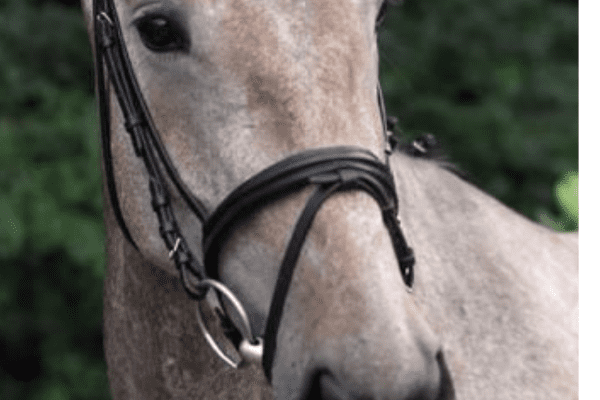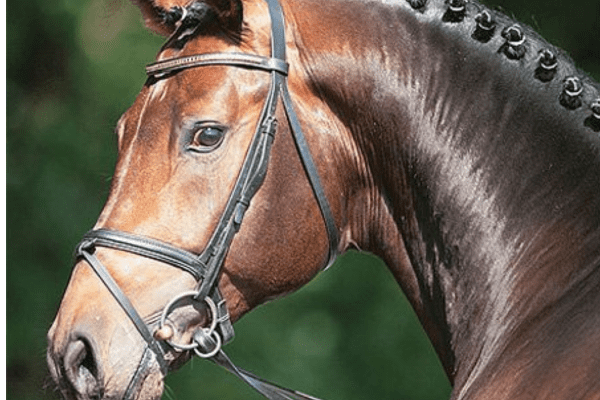This horse, known as the Zweibrucker Horse, originating from Germany has been distinguished for its ad-hoc nature and grace. The breed is bred mostly in the regions that comprise Rhineland-Palatinate and Saarland Their development was greatly influenced by the Emperor Napoleon and his family from France. Perfect for experienced equestrians These horses display an unison of athleticism and elegance.
Origin:
The name “Zweibrucker” is derived from the city of Zweibrucken in Rhineland-Palatinate, Germany. It was in the 1800s that the breeding centre in Zweibrucken was famous across Europe. In the beginning, the breed was developed as a luxury horse for riding and carriage, mixing Spanish, Oriental, and local bloodlines. The horse breeding tradition in the region has been in place for centuries and it’s not a surprise that the Zweibrucker came into being as a result of careful selection and a love for horses.
Historical Backdrop and Significance:
Zweibrucken A city steeped in its history, takes its name from German words that mean “two bridges.” Through the years its political standing has changed, transforming from a prominent city during it’s time during the Middle Ages to a formidable duchy in the vastness that is the Holy Roman Empire.
Although the stud facilities owned by the state in Rhineland-Palatinate may be small in terms of the number of stallions however the richness and depth of the region’s horse breeding story is undeniably significant.
The Vision of Duke Christian IV
1755 marked an important turning point in Zweibrucken’s journey through equestrian. The Duke Christian IV, deeply influenced by the new breed of English Thoroughbreds on an important trip to England and England, decided to create the state Stud.
His plan was simple his goal was to breed horses that reflected the style of their appearance, elegance, and awe that he was awed by around the world. To achieve this goal He initiated the creation of “royal facilities” making sure they were outfitted with top stallions and horses that displayed these qualities.
The Continued Influence of Charles II August
Charles II August the successor to his visionary Christian IV He was not less enthusiastic about the equestrian world’s best. Charles II August had an eloquent vision about the horses from Zweibrucken that they must be “good beautiful, elegant and practical.”
Under his leadership the quality of these horses grew to an extent which their value was so high that the Prussian King, in recognition of their exceptional qualities, purchased and transferred more than 150 Zweibrucken Stallions to the prestigious Principal Stud of Trakehnen. This decision played a significant part in refining and enhancing Trakehner. Trakehner breed.
Socio-Political Transitions and Equestrian Impact
The first decade of the 19th century was full of political turmoil. Zweibrucken was, in 1801 was annexed to the growing French empire, causing a significant disturbances to the breeding of horses, requiring massive relocations.
But, Napoleon Bonaparte, a strategist and enthusiast of horses, was aware of the value of the Zweibrucken lineage. By the year 1806, he breathed energy into Zweibrucken Principal Stud, incorporating top stallions and mares of famous German, Spanish, and Austro-Hungarian lines.
The century’s end exactly in 1890 saw another change as the stud was named”the Principal Royal Bavarian State Stud.
Evolutions in the 20th Century
The requirements of the 20th century particularly during the tense periods of WWI led to the development of strong, durable farm horses that could withstand the demands of war as well as artillery transport.
Responding to these demands the refined and delicate riding horses Zweibrucken was renowned for slowly were replaced with the stronger and more robust warmbloods of Oldenburg.
The destruction of WWII also altered the landscape of the political and equestrian. Post-war, Zweibrucken found itself under the jurisdiction of the newly formed state of Rhineland-Palatinate.
Navigating Breeding Focus Shifts
1960 marked a major shift in the facilities for studs of Zweibrucken in that they lost the Principal Stud status. The region’s dedication to breeding horses and equestrian excellence remained constant.
From 1966 until 1976, the classy Trakehners were the stallions of choice on the roster. Their reign was followed by the introduction of prestigious Hanoverian as well as Holsteiner bloodlines making breeding efforts more focused on developing a much more versatile warmblood-riding horse.
Present-day Scenario and Commitments
The passing through time saw a number of the first outposts and stallion stallions move to other areas or undergo ownership changes. The stud owned by the state remains an icon of equestrian commitments and activities.
Events that are regular, including horse parades, as well as rigorous tests for performance, highlight Zweibrucken’s enduring dedication to equine excellence as well as its determination to safeguard and enhance its extensive heritage of equestrian excellence.

Characteristics:
Branding and Identification
The most important aspect of Zweibrucker’s distinctive brand is its distinctive logo located in the hind leg of its left. This brand represents the heritage of its heritage, including:
The two bridges are in homage towards the town of Zweibrucken.
A symbol of the crown of the duke, in homage to the rich royal heritage of the region.
Despite the distinct brand however, separating the Zweibrucker apart from the other German Warmbloods solely based on appearance isn’t easy. This is due to the physical characteristics are often overlapping because of interbreeding practices.
Interbreeding Practices
German Warmblood registry, with their quest of excellence are renowned for their long-standing tradition of sharing genetic material. This collaboration approach is designed to:
Always improve and enhance breed-specific qualities.
Make sure that each registry gains by the strength of other registry members, creating an atmosphere of unity and a common goal.
Physical Characteristics
Build and weight:
Zweibrücken horses typically fall within the middle-weight category.
The breed showcases variations in physique:
The “old style” horses exude a more robust and muscular build. In contrast, the “modern” type tends to be sleeker and more refined.
Height Parameters:
Ideal height for these equines is approximately 15.3 to 16.3 hands high (hh) by the age of 3.
However, it’s worth noting that deviations from this standard are neither uncommon nor frowned upon. The breed embraces diversity in stature.
Color Diversity:
While the breed predominantly features classic shades such as bay, chestnut, gray, and black, Zweibrücken’s color palette is quite diverse.
Owing to the initiative of some breeders who have a penchant for colored warmbloods, the Zweibrücker spectrum has expanded to include:
Unique patterns like tobiano pintos.
Unconventional hues including palomino, buckskin, and the ethereal cremello.
Zweibrücker Horses: Breeding Standards & Selection Process
Breeding in Rhineland-Palatinate and Saarland:
For years, the State Stud was pivotal in the horse breeding activities of Rhineland-Palatinate and Saarland. In 1977, the Horse Breeders’ Association of Rhineland-Palatinate-Saar (PRPS) was established, highlighting the significance of the Zweibrücker, or German Riding Horse, in the region.
PRPS and Collaborative Efforts:
PRPS collaborates with equestrian associations from areas like Bavaria and Baden-Württemberg. Together, they set unified standards for breeding stock across different regions.
Zweibrücker Breeding Criteria:
Foals undergo thorough assessments at local events. Only after meeting the breed’s standards do they receive their official papers and a distinguishing brand on their left hind leg.
Elevation to the Herd Book:
At three years old, fillies have the opportunity to move from the foal register to the exclusive herd book, following the “Marebook Recording” process. Based on pedigree and quality, mares are categorized into tiers, with only top-tier mares producing breeding stallion sons.
Stallion Selection:
Potential stallions are typically identified as foals. By 2.5 years, these colts participate in a licensing event in Munich. Those meeting the highest standards receive a provisional license, accepted by various south-German breeding associations. To maintain their status, these stallions undergo rigorous evaluations over the years.
A Global Perspective:
While these practices are specific to German Warmbloods, they share similarities with global Warmblood breeding techniques, emphasizing a shared dedication to maintaining top-tier equestrian lineage.
Uses of Horses:
Sport and Competition:
Dressage: Zweibrücker horses excel in dressage, demonstrating their grace, precision, and responsiveness to subtle cues from their riders.
Jumping: Their power and agility make them strong contenders in show jumping competitions, clearing challenging obstacles with ease.
Eventing: With a combination of stamina, versatility, and intelligence, these horses are frequently chosen for three-day eventing competitions, which combine dressage, cross-country, and show jumping.
Driving:
Some Zweibrücker horses are trained for driving, where they showcase their strength and coordination by pulling carriages or carts.
Therapeutic Programs:
Due to their calm and empathetic nature, some Zweibrückers are chosen for equine-assisted therapy programs. They can be instrumental in helping individuals with physical, emotional, or developmental challenges.
Breeding:
Being a well-regarded warmblood breed, Zweibrücker horses are often chosen for breeding programs aimed at maintaining their lineage and enhancing specific traits.
Equestrian Shows and Exhibitions:
Their beauty and grace make them popular choices for equestrian displays, parades, and exhibitions, where they can demonstrate their diverse skills and capture the admiration of audiences.
Education and Training:
Zweibrücker horses are also utilized in equestrian schools and training programs due to their adaptable and forgiving nature, making them suitable mounts for riders of varying skill levels.
In essence, the Zweibrücker horse, with its multifaceted capabilities and inherent charm, finds its niche in diverse equestrian spheres, from the rigors of top-tier competitions to the gentleness required in therapeutic programs.

